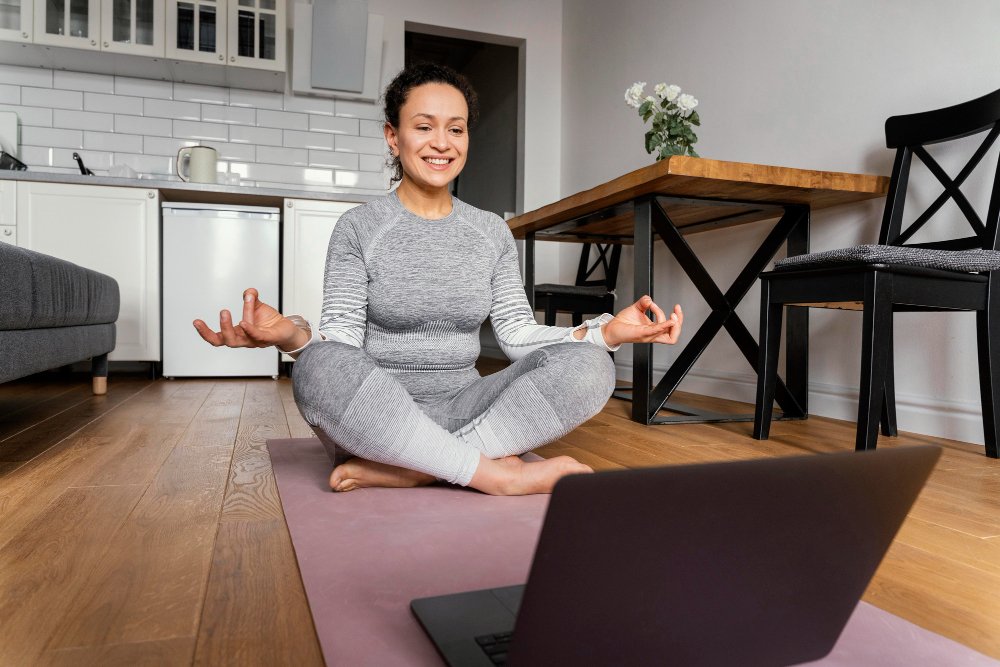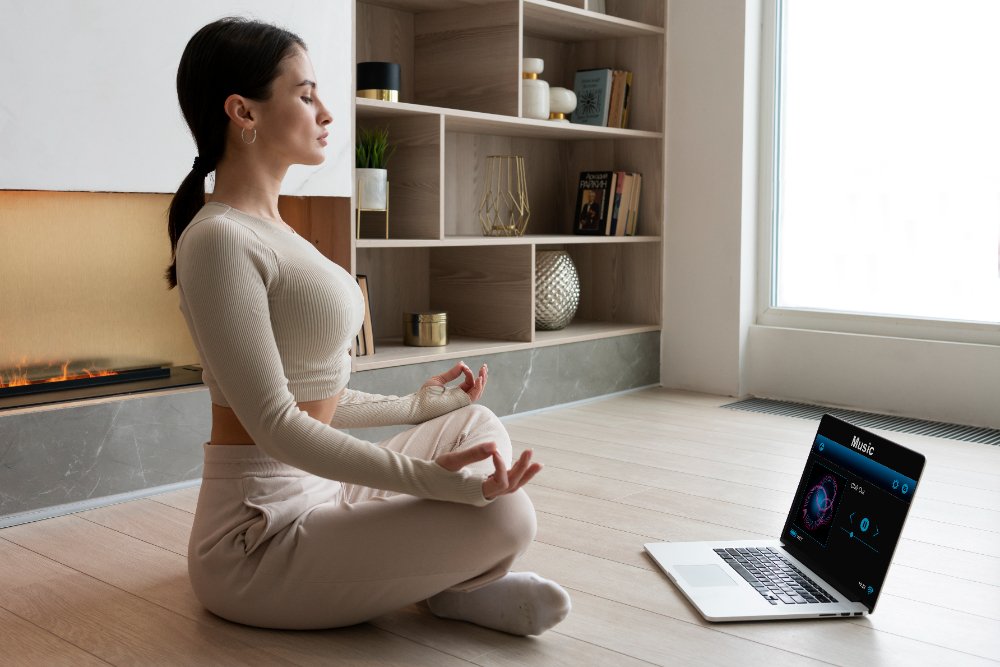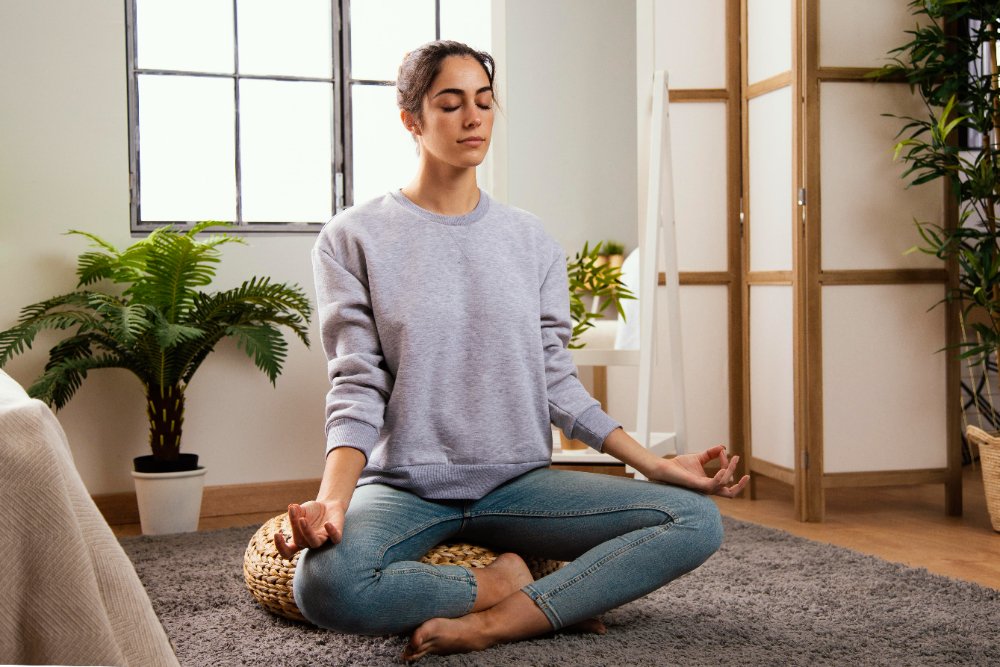Meditation has been around for centuries, and it’s no wonder it’s become so popular lately with all the amazing benefits it offers. Many people believe that meditation can only be practiced in a quiet and peaceful setting. However, with the hectic pace of modern life, it may not always be possible to find such an environment for meditation. This is why it is important to learn how to meditate at home. Meditation can be done anywhere, even in the comfort of your own home.
In fact, practicing meditation at home has many advantages. It allows you to create a personalized and comfortable space for your practice and eliminates the need for travel time or expenses associated with attending classes or retreats.
If you are new to meditation or have been struggling to maintain a consistent practice, here are some best practices for meditating at home that will help you get started and make the most out of your meditation practice.
Read More: Power of a Morning Routine for Mental Clarity
Create a Sacred Space
The first step to establishing a successful home meditation practice is to create a sacred space. This can be any area in your home that you feel comfortable and peaceful in. It could be a spare room, a corner in your bedroom, or even just a spot on the floor with some cushions.
Make sure this space is clean, clutter-free, and quiet. You can also add elements like candles, incense, crystals, or any other items that hold significance for you. The idea is to create an atmosphere that promotes relaxation and helps you disconnect from the outside world.
Having a designated space for meditation will also help you associate it with calmness and tranquility, making it easier to enter a meditative state every time you step into this space.
Set a Schedule

One of the greatest challenges in sustaining a meditation practice is carving out the time to do it. With our busy schedules and never-ending to-do lists, it can seem impossible to make room for yet another activity. However, setting a specific time for your daily meditation practice will help you stay consistent and committed.
Select a time of day that suits you best and make it a consistent part of your routine. Many people find that early mornings or evenings before bed are the most conducive times for meditation. It is important to choose a time when you are least likely to be distracted by external factors.
Moreover, having a set schedule for your meditation practice will also create a sense of discipline and structure in your daily routine.
Start with Short Sessions

When starting a home meditation practice, it is important to not overwhelm yourself. Many people make the mistake of jumping into long sessions right away and feel discouraged when they are unable to maintain it. Instead, start with short sessions of 5-10 minutes and gradually increase the duration as you become more comfortable.
This will help you build a habit and ease into longer meditation sessions without feeling overwhelmed or burnt out.
Focus on Your Breath

The breath is an essential aspect of any meditation practice. Focusing on your breath helps bring awareness to the present moment and calms your mind. Whether you are following a specific breathing technique or simply observing your breath, it is important to use it as an anchor throughout your practice.
When your mind begins to drift, softly guide your attention back to the rhythm of your breath. This will help you stay present and prevent distractions from taking over.
Explore Different Techniques
There are many different meditation techniques and practices that you can explore at home. From guided meditations to silent sitting, mantra chanting to visualization, there is no one right way to meditate.
Take some time to experiment with different techniques and see what works best for you. You can also mix and match techniques depending on how you feel on a particular day. The key is to find a practice that resonates with you and helps you achieve a state of calmness and clarity.
Use Guided Meditations
If you are new to meditation, using guided meditation can be a great way to get started. These are recorded or live sessions led by an experienced meditation teacher who guides you through the different aspects of meditation.
Guided meditations can also help you stay focused and motivated during your practice. There are many resources available online for guided meditations, making it easily accessible for anyone looking to start their home meditation practice.
Be Patient and Kind to Yourself
Meditation is not about achieving perfection or clearing your mind completely. It is a continuous process of observing your thoughts without judgment and learning to let go of them.
It is natural for your mind to wander and get distracted during meditation, especially when starting out. Instead of getting frustrated or giving up, be patient and kind to yourself. Acknowledge any thoughts that arise and gently bring your focus back to your breath or chosen anchor.
Remember that consistency is key to establishing a successful meditation practice at home. Every day will be different, but with patience and kindness towards yourself, you will gradually see the benefits of regular meditation in your daily life.
Conclusion
Meditating at home is a convenient and accessible way to incorporate mindfulness into your daily routine. With a designated sacred space, a set schedule, and patience towards yourself, you can establish a consistent and fulfilling meditation practice at home.
Remember to stay open-minded, explore different techniques, and most importantly, be kind to yourself throughout your journey of self-discovery and inner peace.
Most FAQs About Meditation at Home
How long should I meditate each day?
There is no one-size-fits-all answer, but starting with just 5-10 minutes a day is recommended. As you grow more comfortable with the practice, you can gradually extend the duration.
What is the best time to meditate at home?
Many people find early morning or evening before bed to be the best times for meditation, as these are usually quieter and help set a positive tone for your day or promote relaxation before sleeping.
Do I need any special equipment to meditate at home?
No, you don’t need any special equipment. A quiet space with a comfortable chair, cushion, or blanket is sufficient. Optional items like candles or soothing music can enhance the atmosphere but are not necessary.
How do I deal with distractions during meditation?
Distractions are normal. When your mind wanders, gently bring your focus back to your breath or anchor point without judgment. Over time, this becomes easier with practice.
Can I meditate lying down?
Yes, you can meditate lying down, but be mindful of staying awake. Sitting upright is typically recommended for beginners to maintain alertness during meditation.
How soon can you experience the benefits of meditation?
Some benefits, such as relaxation and a sense of calm, can be felt immediately. Consistent practice over weeks or months leads to more profound benefits, like reduced stress and improved focus.


